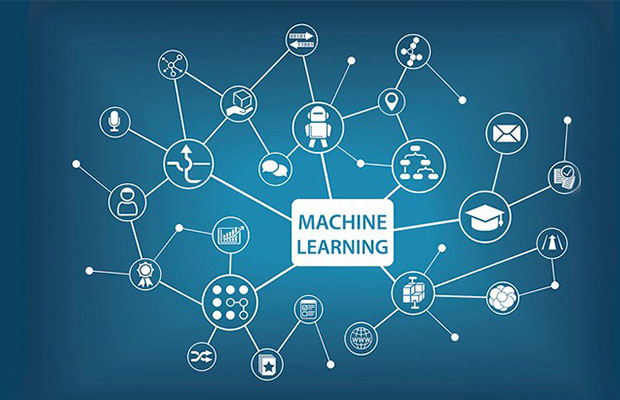One of the most important phases of machine learning concerns the choice of the so-called “best model”.
How to choose ML models? The answer depends on many factors like the problem statement and the kind of output you want, the type and size of the data, the available computational time, the number of features, and observations in the data, to name a few.
This guide will explain the criteria you should use to identify the best machine learning model for your use case, priorities, and constraints, though it is difficult to give you a precise recommendation for the model that will work in your specific situation.
Table of Contents
What Is Model Selection?
Model selection is the process of picking one final machine-learning model from a group of potential models for a training dataset.
Model selection is a procedure that can be used with a variety of models (such as logistic regression, SVM, KNN, etc.) as well as between models of the same kind that are set up with various model hyperparameters (e.g. different kernels in an SVM).
For instance, we might have a dataset for which we are interested in creating a classification or regression predictive model. Since it is impossible to predict in advance, we cannot say which model will work best for this issue. As a result, we fit and assess a variety of models to the issue.
Model selection is the process of choosing one of the models as the final model that addresses the problem.
Model selection is different from model assessment.
Model selection, for instance, is the process by which we evaluate or compare potential models before selecting the best one. Conversely, once a model has been selected, it can be assessed in order to convey how well it is anticipated to perform in general.
Considerations For Model Selection
1. What Standard Of Quality Do You Require?
Not all of these metrics may be applicable in every circumstance, but the more metrics you can include, the higher quality results your ML model will ideally produce.
Some teams or organizations are unable to accept unpredictable results from some ML models. This is especially true when making important decisions involving security, finances, or people because the costs of poor analysis are too high.
However, there are some models that have been demonstrated to be effective for specific industries; as long as businesses can supply the appropriate datasets and set the appropriate measurement metrics for the ML tooling, they can be confident that these models will yield trustworthy results.
Trade-offs For Quality
In general, increased quality has the following trade-offs:
- Bigger data sets
- Longer training time
- Slower inference time
2. Should You Explicitly State Your Findings?
Think About How Simple It Will Be For You To Describe, Interpret, And Defend The Outcomes Of Your Chosen Ml Model.
A model is frequently only useful if it is thoroughly understood. No matter how effective an algorithm is, many of them operate like mysterious black boxes, making it difficult to understand the results because the data may not always be interpreted correctly.
The importance of clearly communicating a model’s findings cannot be overstated. You should err on the side of caution and use a more understandable model in those circumstances because the lack of explainability might be a deal-breaker.
Avoid neural networks, which are frequently quite difficult to understand, and instead use models like linear regression and decision trees where explainability is crucial.

3. What Level Of Complexity Can You Handle?
A Complex Ml Model May Not Be Necessary For Your Data Set Or Objectives.
A more complex model can uncover more intriguing patterns in the data, which frequently yields deeper and more precise insights. To use those findings, though, will require a certain caliber of intellectual interpretation.
In general, increased complexity has the following trade-offs:
- Better quality (sometimes)
- Less explainability
- Bigger data sets
- Longer training time
- Slower inference time
Putting explainability aside, the cost of creating and maintaining a model is also a significant aspect of a project’s success. During the entire lifecycle of a model, a complex setup will have an ever-increasing impact and frequently necessitate far more complex data models than are available from every company.
4. What Size Dataset Do You Have?
Think About How Much Data You Currently Have And How Much Data Is Required For The Chosen Ml Model To Be Effective.
The size of the datasets needed for an ML model to perform its function is also important to consider when choosing one, in addition to the model’s own efficacy.
A K-nearest neighbors (KNN) model, by contrast, performs much better with fewer examples. For instance, a neural network is very good at processing and synthesizing large amounts of data.
How much data you actually need to get good results is a related factor. Sometimes you only need 100 training examples to build a solid solution; other times you need 100,000.
As a result, be sure to take into account the amount of data you have at your disposal as well as the amount of data a model will require to be useful in your particular situation.
In general, increased data size has the following trade-offs:
- Better quality
- More complexity
- Longer training time
5. What Characteristics Will Make You Easily Integrate?
Think About The Various Features And Configuration Options That Your Preferred Ml Model Offers.
A larger software ecosystem must be taken into account for an ML model to function properly. The ML model’s features and configuration options will either facilitate integration or stand in the way of it.
Additionally, adding more features will frequently improve the quality of the solutions generated by your model.
More features, though, might also make your model more complex. So be cautious when assessing features and make sure you actually require them.
In general, increased features and configuration have the following trade-offs:
- Better integration
- Less explainability
- More complexity
6. How Long Can You Afford To Train Your Model?
Take Into Account The Time And Money Required To Train Your Chosen Ml Model To Achieve The Quality Metrics You Require.
What would you prefer, for instance, a 98% accurate model that costs $10,000 to train or a 97% accurate model that costs $2,000?
Your priorities and financial constraints will determine the response to this question. How significant is model accuracy to you? For a model to start generating a return on investment, how much cash and time are you prepared to put into it?
Additionally, some models, like recommendation systems that must deliver results based on specific user preferences, cannot afford lengthy training cycles because they must incorporate new information almost immediately.
In general, increased training time has the following trade-offs:
- Better quality
- Higher cost
- Slower delivery
7. Do You Need An Inference Time That Is Quick?
Think About How Quickly You Need The Chosen Ml Model To Process Data And Produce Results.
You want to have an ML model that can produce the results you require because quality and accuracy are crucial. The need for a model that can produce results quickly does arise occasionally, though. Here, we are not referring to the amount of time an ML model needs to learn, but rather to its output processing speed, or inference time.
It’s crucial to look for an ML model with a quick inference time if you want to use it to power a chatbot that must respond quickly to user input and perform quickly overall. In order to prevent collisions, self-driving cars must assess information and act quickly.
Some machine learning (ML) models are focused on deep analysis rather than quick results, so they may need larger datasets and more time to produce the results you need.
Steps For Machine Learning
- Collect data
- Check for anomalies, missing data and clean the data
- Perform statistical analysis and initial visualization
- Build models
- Check the accuracy
- Present the results
Conclusion
Selecting a model from a large pool of potential models for a predictive modeling problem is the process of model selection.
Beyond model performance, there may be a variety of competing considerations, such as complexity, maintainability, and resource availability.
Read More: How to Deploy Machine Learning Models?




